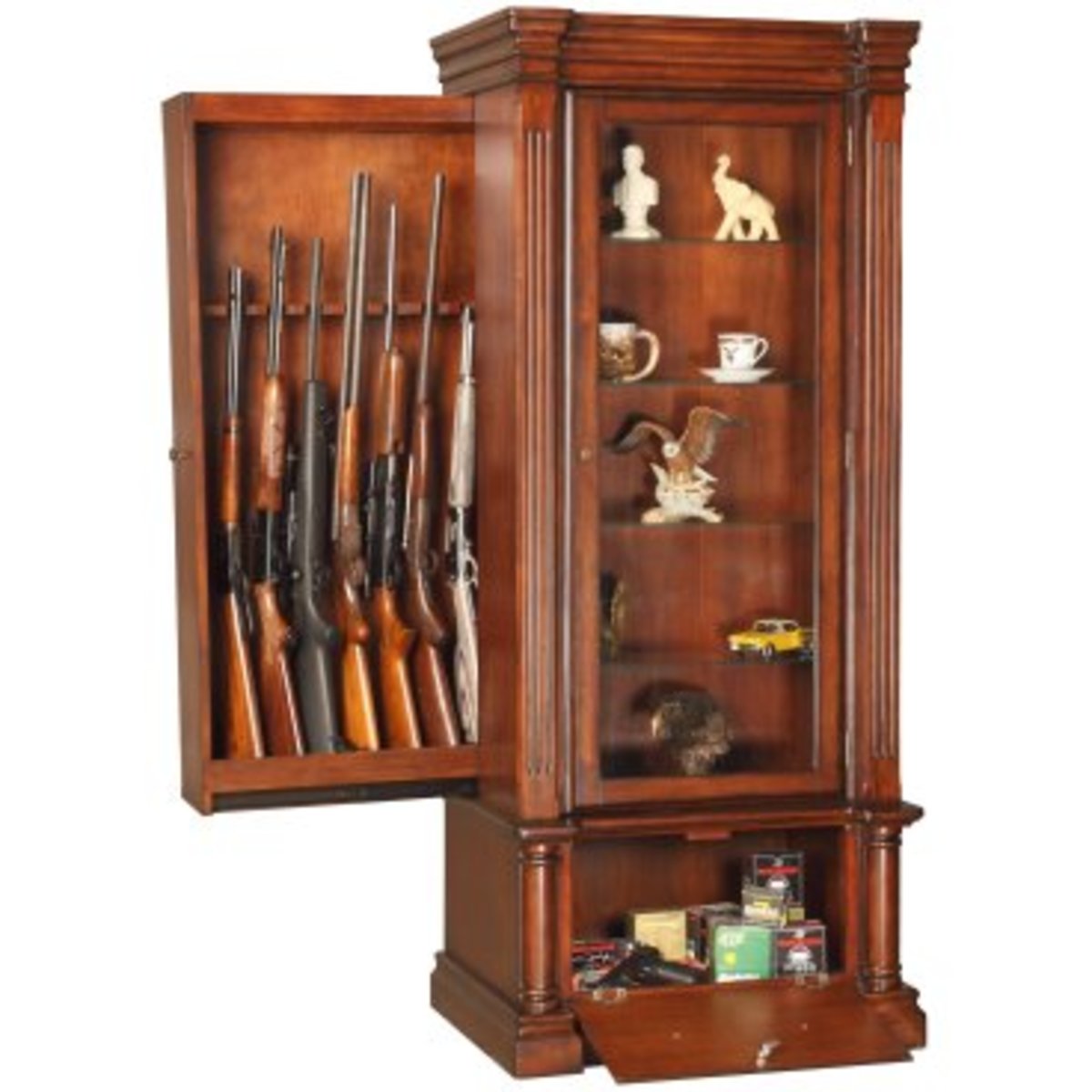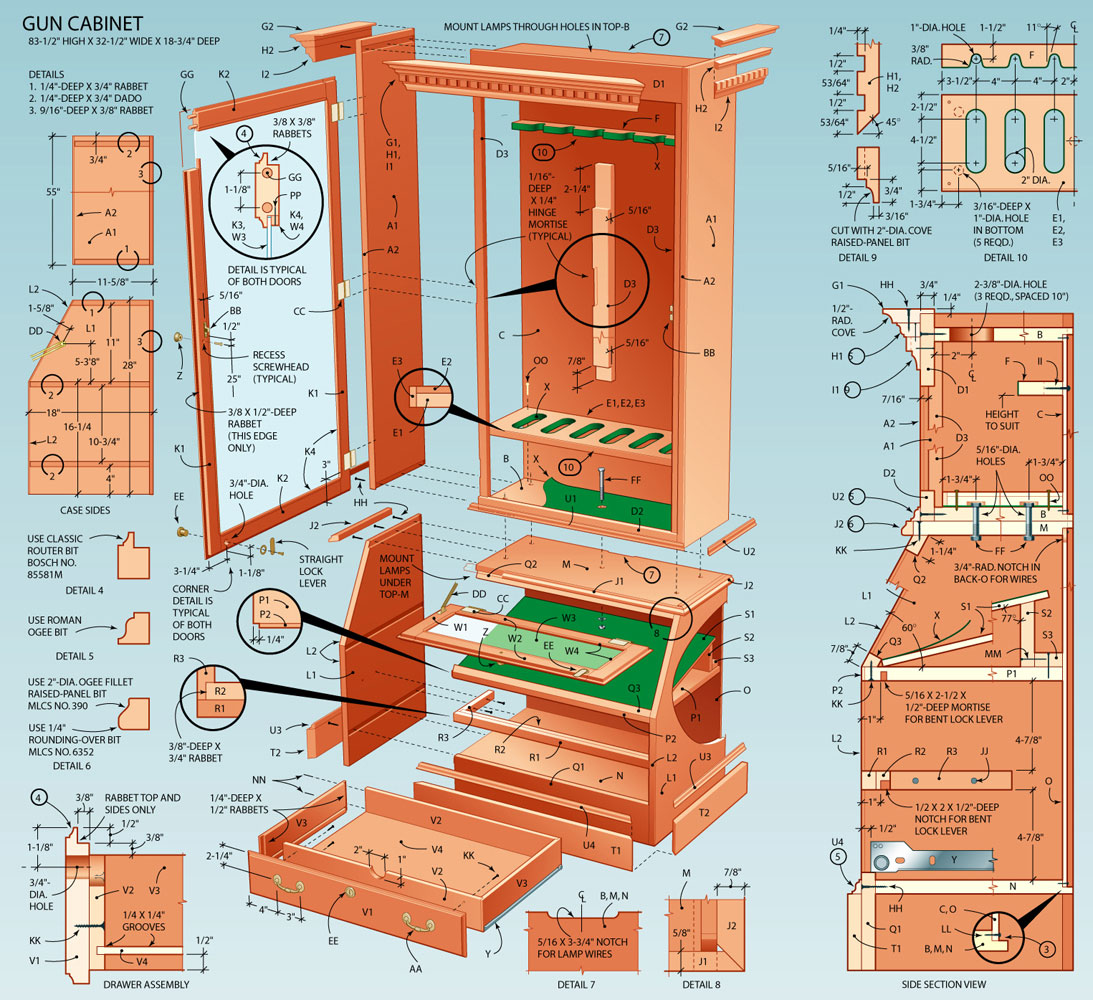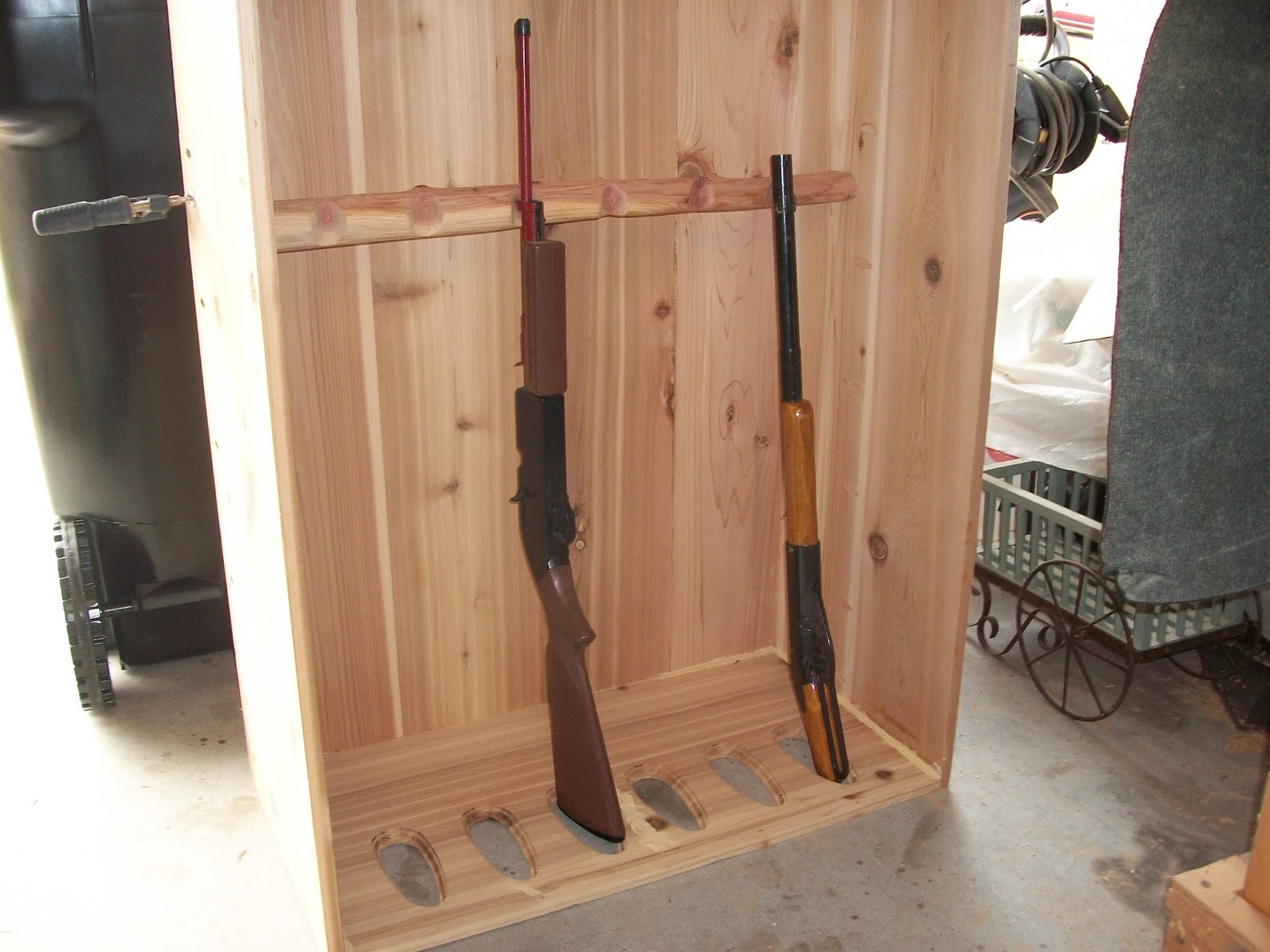The Importance of a Wood Gun Cabinet

A wood gun cabinet is more than just a storage solution; it’s a crucial component of responsible firearm ownership. It provides a secure and organized environment for your firearms, safeguarding them from unauthorized access and potential accidents. This cabinet not only enhances safety but also ensures the longevity and value of your firearms.
Safety and Security Advantages, Wood gun cabinet plans
A wood gun cabinet plays a vital role in ensuring the safety and security of your firearms. By storing them in a locked cabinet, you effectively prevent unauthorized access by children, intruders, or anyone who shouldn’t be handling them. This minimizes the risk of accidental discharge, theft, or misuse, promoting a safer environment for everyone.
Choosing the Right Gun Cabinet
Selecting the right gun cabinet involves considering factors that align with your individual needs and preferences. Here are some key aspects to evaluate:
Size and Capacity
The size and capacity of the cabinet should be determined by the number and types of firearms you need to store. If you own a large collection, you’ll need a cabinet with ample space. Consider the dimensions of your firearms, including rifles, shotguns, and handguns, to ensure a comfortable fit.
Features
Gun cabinets offer various features that enhance security and organization. Some common features include:
- Locking Mechanism: Look for a robust locking mechanism, preferably with a key lock or combination lock, to prevent unauthorized access.
- Interior Organization: Cabinets with adjustable shelves, dividers, and hooks allow you to organize your firearms efficiently. This ensures easy access and prevents damage due to mishandling.
- Fire Resistance: Some cabinets offer fire-resistant features, protecting your firearms from heat and flames in case of a fire.
- Humidity Control: A wood gun cabinet can help maintain a stable humidity level, preventing damage to your firearms caused by excessive dryness or moisture.
Material and Construction
Wood gun cabinets are known for their durability and aesthetic appeal. They typically feature solid wood construction, which provides strength and longevity. Look for cabinets made from high-quality wood, such as oak or walnut, for increased durability and a classic look.
Price and Budget
Gun cabinets come in a range of prices, depending on size, features, and material. It’s essential to set a budget and find a cabinet that fits your financial constraints. Consider the long-term value and security benefits when making your decision.
Understanding Wood Gun Cabinet Plans

Wood gun cabinet plans are essential blueprints for creating a secure and stylish storage solution for your firearms. They provide detailed instructions, measurements, and diagrams, guiding you through the entire construction process.
Types of Wood Gun Cabinet Plans
The availability of wood gun cabinet plans caters to diverse skill levels and preferences.
- Free Plans: Numerous websites offer free downloadable plans, often with basic designs suitable for beginners. These plans may have limited customization options, but they provide a good starting point for those seeking an economical solution.
- Paid Plans: Premium plans, available for purchase from online retailers or woodworking magazines, often offer more intricate designs, detailed instructions, and professional-grade blueprints. These plans are ideal for individuals seeking a higher level of detail and customization.
- DIY Plans: Many woodworking enthusiasts create their own plans, sharing them online through forums or personal websites. These plans often reflect unique designs and individual preferences, providing inspiration and alternative approaches to building a gun cabinet.
- Professional Plans: Experienced woodworkers or cabinetmakers may offer custom plans tailored to specific requirements. These plans are designed for professional-level construction and often incorporate complex joinery techniques and high-quality materials.
Materials and Tools Required
The materials and tools required for building a wood gun cabinet vary depending on the chosen plan.
- Wood: Common choices include hardwoods like oak, maple, or cherry for durability and aesthetic appeal. Softwoods like pine or cedar are also used, but may require additional finishing for protection.
- Hardware: This includes hinges, drawer slides, locks, and fasteners. Choose high-quality hardware for long-lasting performance and security.
- Finishing Supplies: Stain, paint, varnish, or oil-based finishes enhance the appearance and protect the wood.
- Tools: Essential tools include a saw, drill, sander, measuring tape, level, and clamps. Additional tools may be needed depending on the plan’s complexity.
Key Steps in Following a Wood Gun Cabinet Plan
Following a wood gun cabinet plan involves a systematic approach, ensuring accurate construction and a finished product that meets your specifications.
- Cutting: Precisely cut the wood pieces according to the plan’s dimensions. Use a saw or a table saw for accurate cuts.
- Assembly: Join the cut pieces using glue, screws, or dowels, ensuring proper alignment and stability. Refer to the plan for specific assembly instructions.
- Finishing: Once the cabinet is assembled, apply the desired finish, such as stain, paint, or varnish. This protects the wood and enhances its appearance.
Building a Wood Gun Cabinet: Wood Gun Cabinet Plans

Building a wood gun cabinet is a rewarding project that combines woodworking skills with a practical purpose. It allows you to store your firearms safely and securely while showcasing them in a stylish and functional piece of furniture. This guide provides a comprehensive step-by-step approach, covering everything from planning to finishing.
Choosing the Right Wood
The choice of wood significantly impacts the cabinet’s durability, appearance, and cost. Hardwoods like oak, maple, and cherry are known for their strength, durability, and beautiful grain patterns. Softwoods like pine and cedar are more affordable but less durable. Consider factors like your budget, desired aesthetic, and the weight of the firearms you’ll be storing.
Preparing the Wood
Before assembling the cabinet, it’s crucial to prepare the wood properly. This involves:
- Planing: This process smooths and flattens the wood surface, ensuring a consistent thickness for accurate joinery.
- Sanding: Sanding removes imperfections and prepares the wood for finishing. Start with coarse grit sandpaper and progressively use finer grits to achieve a smooth surface.
- Cutting: Use a saw, miter saw, or table saw to cut the wood pieces to the required dimensions based on your plans.
Assembling the Cabinet
The assembly process involves joining the various wood pieces together to form the cabinet’s structure. This typically involves:
- Joints: Use strong and durable joints like mortise and tenon, dovetail, or pocket hole joints to create a robust structure.
- Gluing: Apply wood glue to the joint surfaces and clamp them together until the glue dries completely.
- Screws or Nails: Use screws or nails to reinforce the joints and provide additional stability.
Installing Hardware
The hardware is essential for the functionality and security of the gun cabinet. This includes:
- Hinges: Choose heavy-duty hinges that can support the weight of the cabinet door and its contents. Consider concealed hinges for a clean aesthetic.
- Locks: Install high-quality locks that are difficult to pick or tamper with. Consider a combination lock, a key lock, or an electronic lock depending on your security needs.
- Shelves: Install adjustable shelves to accommodate different firearm sizes and accessories.
Finishing the Cabinet
Finishing the cabinet involves applying a protective coating to enhance its appearance and durability. This typically involves:
- Sanding: Sand the cabinet surface with fine-grit sandpaper to remove any imperfections and create a smooth finish.
- Staining: Apply a wood stain to enhance the natural grain patterns and color of the wood. Choose a stain color that complements your décor.
- Sealing: Apply a sealant, such as polyurethane or varnish, to protect the wood from moisture, scratches, and UV damage.
Tools and Materials
| Step | Tools | Materials |
|---|---|---|
| Preparing the Wood | Planer, Sander, Saw (miter saw, table saw), Measuring tape, Pencil, Level | Wood (hardwood or softwood), Sandpaper (various grits), Wood glue |
| Assembling the Cabinet | Drill, Screwdriver, Clamps, Router (optional) | Screws, Nails, Wood glue, Joinery hardware (mortise and tenon, dovetail, or pocket hole joints) |
| Installing Hardware | Drill, Screwdriver, Level | Hinges, Locks, Shelves, Shelf supports |
| Finishing the Cabinet | Sandpaper (fine grit), Stain brush, Polyurethane or varnish, Rags | Wood stain, Polyurethane or varnish, Cleaning supplies |
Wood gun cabinet plans – Building a wood gun cabinet is a fun DIY project, especially if you’re into that kind of thing. But if you’re looking for something a little more practical, maybe a skinny bathroom wall cabinet would be a better choice.
They’re super handy for maximizing space, and you can even find some with a cool vintage vibe. But if you’re set on building a gun cabinet, just make sure you’re following all the safety regulations and using the right materials.
Building a wood gun cabinet is a serious project, but don’t let it intimidate you. You’ll need to consider things like safety, storage, and aesthetics. If you’re looking for a sleek and modern look, consider incorporating elements like open shelving, similar to the bathroom cabinets with open shelving trend.
This can create a visually appealing display for your collection while maintaining the necessary security features.
